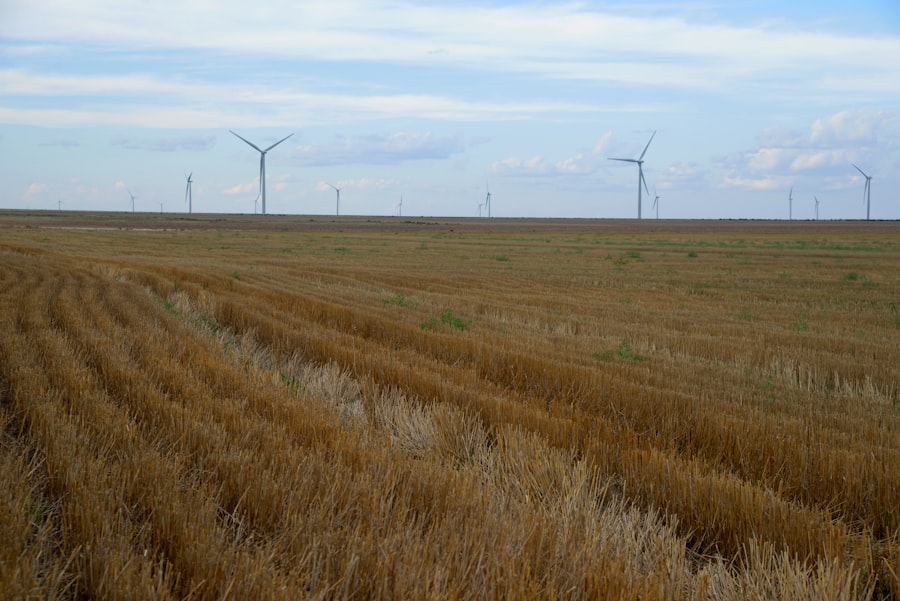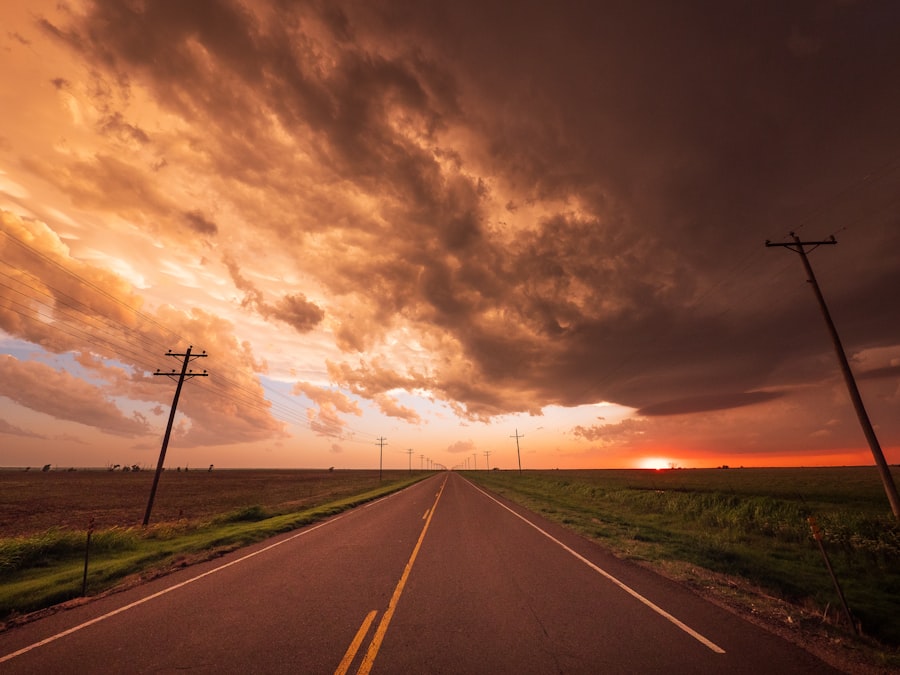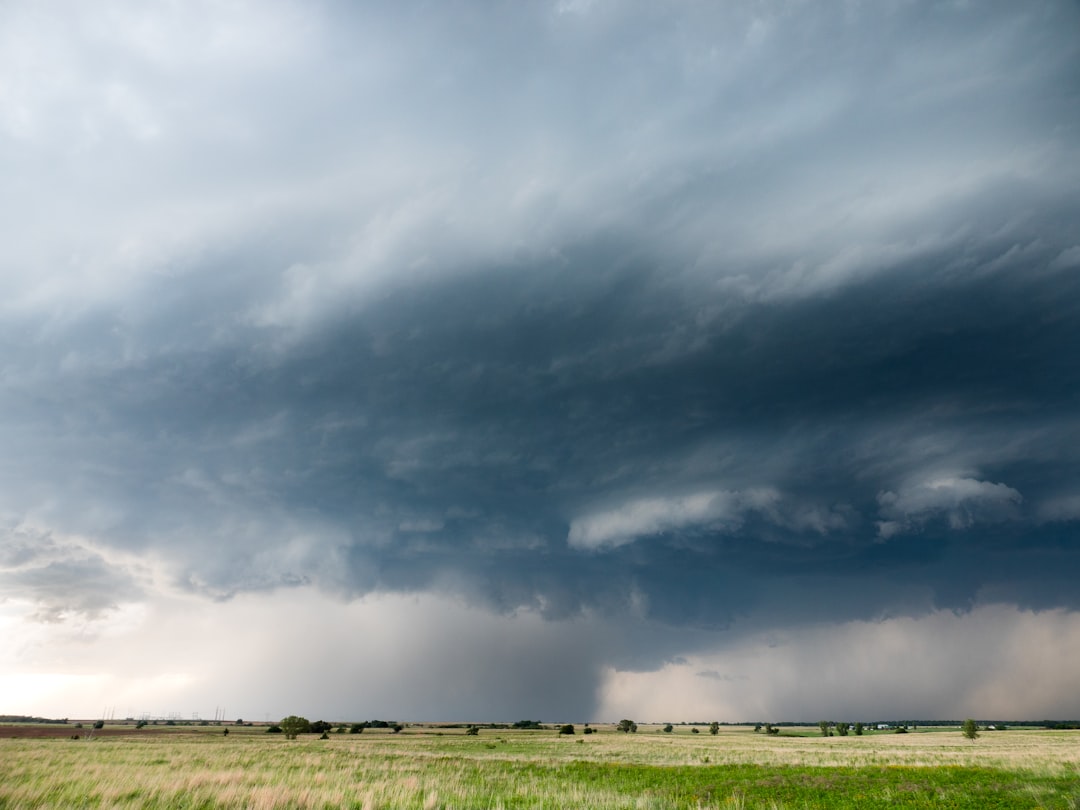The vastness of wide open spaces captivates the imagination and stirs the soul. In regions like the Great Plains, the horizon stretches endlessly, offering a breathtaking panorama that seems to go on forever. The expansive skies, often painted in hues of orange and pink during sunrise and sunset, create a canvas that changes with the seasons.
This beauty is not merely visual; it evokes a sense of freedom and possibility, inviting individuals to explore and appreciate the natural world around them. The gentle undulations of the land, dotted with wildflowers and grasses swaying in the breeze, provide a serene backdrop that contrasts sharply with the hustle and bustle of urban life. Moreover, these wide open spaces foster a unique connection between people and their environment.
The sheer scale of the landscape encourages introspection and reflection, allowing individuals to contemplate their place in the world. As one stands amidst the vastness, it becomes clear that there is something profoundly humbling about being surrounded by nature’s grandeur. The beauty of these spaces lies not only in their physical attributes but also in the emotional responses they elicit, reminding individuals of their smallness in the grand scheme of life while simultaneously instilling a sense of belonging to something much larger.
Key Takeaways
- Wide open spaces offer a sense of freedom and tranquility, allowing for a deeper connection with nature and oneself.
- The quiet of the Great Plains provides an opportunity for inner peace and reflection, away from the hustle and bustle of city life.
- Living in isolation can be challenging, but it also fosters self-reliance and independence, leading to personal growth and resilience.
- Embracing the slow pace of life in the Great Plains allows for a deeper appreciation of the natural world and a more meaningful existence.
- Connecting with nature in the Great Plains fosters a strong sense of community and a unique culture rooted in the land and its traditions.
Finding Peace in the Quiet
In a world that often feels overwhelmingly loud and chaotic, the quietude found in wide open spaces offers a sanctuary for those seeking solace. The absence of urban noise—cars honking, sirens blaring, and people rushing—creates an environment where one can truly hear themselves think. This tranquility allows for moments of deep reflection and mindfulness, where individuals can reconnect with their thoughts and feelings without distraction.
The gentle rustle of leaves or the distant call of a bird becomes a soothing soundtrack, inviting a sense of calm that is often elusive in more populated areas. Furthermore, this peace fosters a deeper appreciation for the simple things in life. In the stillness, one can observe the subtle changes in nature—the way the light shifts throughout the day or how the seasons transform the landscape.
In embracing this stillness, individuals often find clarity and purpose, allowing them to navigate life’s challenges with a refreshed perspective.
The Challenge of Living in Isolation

While the allure of wide open spaces is undeniable, living in isolation presents its own set of challenges. For many who reside in remote areas, the distance from urban centers can lead to feelings of loneliness and disconnection. The lack of immediate access to amenities and social activities can create a sense of isolation that weighs heavily on individuals.
This solitude can be particularly difficult during harsh winters or inclement weather when travel becomes even more challenging, further exacerbating feelings of seclusion. Additionally, the challenge of maintaining relationships can be daunting in such environments. With friends and family often miles away, individuals may find it difficult to cultivate social connections.
This isolation can lead to a longing for companionship and community, making it essential for those living in these areas to actively seek out opportunities for interaction. Despite these challenges, many find ways to adapt and thrive, discovering new forms of connection through local gatherings or online communities that bridge the gap created by distance.
Embracing the Slow Pace of Life
| Country | Average Life Expectancy | Hours of Work per Week | Percentage of Population with Stress-related Illnesses |
|---|---|---|---|
| Japan | 84.6 years | 33.5 hours | 18% |
| Denmark | 81.4 years | 32.1 hours | 12% |
| Costa Rica | 79.3 years | 40.6 hours | 15% |
In stark contrast to the fast-paced lifestyle prevalent in urban settings, life in wide open spaces often unfolds at a slower rhythm. This deliberate pace allows individuals to savor each moment, fostering a deeper appreciation for everyday experiences. Tasks that may seem mundane—tending to gardens, caring for livestock, or simply enjoying a sunset—become opportunities for mindfulness and reflection.
The slow pace encourages individuals to engage fully with their surroundings, cultivating a sense of presence that is often lost in the rush of modern life. Moreover, this slower lifestyle promotes a greater sense of well-being. Studies have shown that reducing the speed at which one lives can lead to lower stress levels and improved mental health.
In embracing this slower pace, individuals often find themselves more attuned to their needs and desires, allowing for a more balanced approach to life. The simplicity of daily routines becomes a source of joy, as individuals learn to appreciate the beauty in small moments rather than constantly striving for bigger achievements.
Connecting with Nature in the Great Plains
The Great Plains offer an unparalleled opportunity for individuals to connect with nature on a profound level. The expansive landscapes are home to diverse ecosystems teeming with wildlife, from majestic bison roaming freely to delicate wildflowers blooming in vibrant colors. This rich biodiversity invites exploration and discovery, encouraging individuals to immerse themselves in their surroundings.
Whether hiking through rolling hills or observing birds in their natural habitat, each encounter with nature deepens one’s appreciation for the intricate web of life that exists within these vast spaces. Additionally, this connection with nature fosters a sense of stewardship and responsibility toward the environment. As individuals witness the beauty and fragility of their surroundings, they often feel compelled to protect and preserve these natural resources for future generations.
Engaging with nature not only enhances personal well-being but also cultivates a collective consciousness about environmental conservation. In this way, living amidst the Great Plains becomes not just an experience but a commitment to nurturing the land that sustains them.
Building a Strong Sense of Community

Despite the challenges posed by isolation, communities in wide open spaces often develop strong bonds that are rooted in shared experiences and mutual support. In rural areas, neighbors frequently come together to lend a helping hand during harvest season or organize local events that celebrate their culture and traditions.
The strength of these connections is often amplified by the understanding that everyone faces similar challenges, creating an unspoken solidarity among residents. Moreover, community engagement plays a vital role in enhancing quality of life in these areas. Local organizations and initiatives often emerge to address common needs—be it educational programs for children or support networks for families facing hardships.
By working together toward common goals, residents cultivate resilience and adaptability that strengthen their community fabric. In this way, living in wide open spaces becomes not just an individual journey but a collective endeavor that enriches everyone involved.
Embracing Self-Reliance and Independence
Living in remote areas necessitates a certain level of self-reliance and independence that can be both empowering and challenging. Individuals often find themselves taking on multiple roles—whether as farmers, artisans, or caretakers—requiring them to develop diverse skills and resourcefulness. This independence fosters confidence as they learn to navigate obstacles and solve problems creatively.
The ability to rely on oneself cultivates resilience, enabling individuals to face life’s uncertainties with courage and determination. However, this self-reliance also comes with its own set of challenges. The need for independence can sometimes lead to feelings of isolation or overwhelm when faced with difficulties that seem insurmountable.
Yet, many who embrace this lifestyle find strength in their ability to adapt and persevere. They learn that asking for help is not a sign of weakness but rather an acknowledgment of their humanity—a reminder that even the most independent individuals thrive best within supportive networks.
The Unique Culture and Traditions of the Great Plains
The culture and traditions found within the Great Plains are as diverse as the landscapes themselves. Rooted in history and shaped by generations of inhabitants, these customs reflect a deep connection to the land and its resources. From Native American heritage to pioneer legacies, each community carries forward unique stories that enrich their identity.
Festivals celebrating local agriculture or traditional crafts serve as vibrant expressions of this cultural tapestry, bringing people together to honor their shared heritage. Additionally, storytelling plays a significant role in preserving these traditions. Oral histories passed down through generations serve as both entertainment and education, imparting valuable lessons about resilience, community values, and respect for nature.
These narratives not only connect individuals to their past but also inspire future generations to carry forward their cultural legacy. In embracing these traditions, residents cultivate a sense of pride in their identity while fostering unity within their communities.
Overcoming the Challenges of Harsh Weather
The Great Plains are known for their unpredictable weather patterns—ranging from scorching summers to frigid winters—and residents must learn to adapt accordingly. Harsh conditions can pose significant challenges for those living in these areas; however, they also foster resilience and ingenuity among inhabitants. Farmers must develop strategies to protect crops from droughts or floods while ensuring livestock remain safe during severe storms.
This adaptability becomes second nature as individuals learn to read the signs of changing weather patterns and respond proactively. Moreover, overcoming these weather-related challenges often brings communities closer together. Neighbors rallying together during extreme conditions—whether helping each other prepare for storms or sharing resources during droughts—reinforces bonds built on trust and cooperation.
These shared experiences create a collective strength that empowers residents to face adversity with determination and solidarity.
Finding Inspiration in the Vastness of the Land
The vastness of the Great Plains serves as an endless source of inspiration for those who call it home. Artists, writers, musicians, and dreamers alike find themselves drawn to the beauty and solitude offered by these landscapes. The expansive skies provide an ever-changing backdrop for creativity—each sunrise or sunset igniting new ideas and perspectives.
Many artists capture the essence of this land through their work, translating its beauty into visual art or poetry that resonates with others. Additionally, this inspiration extends beyond artistic expression; it influences personal growth and self-discovery as well. Individuals often find clarity amidst the vastness—moments of insight that guide them toward new paths or aspirations.
The simplicity found in nature encourages introspection and exploration of one’s values and beliefs, leading many to embark on journeys of self-improvement or change.
Embracing the Solitude: A Source of Strength and Resilience
Ultimately, embracing solitude within wide open spaces can become a profound source of strength and resilience for individuals seeking personal growth. While isolation may initially feel daunting or overwhelming, it often reveals hidden depths within oneself—an opportunity for introspection that fosters self-awareness and emotional intelligence. In solitude, individuals confront their fears and insecurities head-on, emerging stronger as they learn to navigate life’s complexities independently.
This journey toward self-discovery is not without its challenges; however, those who embrace solitude often find it leads them toward greater clarity about their purpose and passions. The quiet moments spent reflecting on one’s thoughts can illuminate paths previously obscured by noise or distraction. In this way, solitude transforms from a source of loneliness into an empowering force—one that nurtures resilience while encouraging individuals to forge their unique paths amidst life’s uncertainties.
In conclusion, wide open spaces offer both beauty and challenges that shape those who inhabit them. From finding peace in quietude to building strong communities rooted in shared experiences, life on the Great Plains is rich with opportunities for growth and connection. Embracing self-reliance while honoring cultural traditions fosters resilience amid harsh weather conditions—a testament to human adaptability against nature’s whims.
Ultimately, it is within this vastness that individuals discover inspiration not only from their surroundings but also from within themselves—a journey toward strength forged through solitude and reflection.
Life in the sparsely populated Great Plains presents unique challenges and opportunities, shaped by its vast landscapes and limited population density. The region is characterized by its expansive prairies, agricultural activities, and a strong sense of community among its residents. An interesting article that delves into the dynamics of living in such areas can be found on MyGeoQuest. It explores the geographical and cultural aspects that define the Great Plains, offering insights into how residents adapt to and thrive in this environment. For more detailed information, you can read the article by visiting this link.
WATCH NOW! Why America’s Heartland Is Disappearing Fast
FAQs
What is the population density of the Great Plains region?
The Great Plains region has a relatively low population density compared to other regions in the United States. The population density varies across the region, but in general, it is sparsely populated.
What are the main factors contributing to the sparsely populated nature of the Great Plains?
The Great Plains region is characterized by its semi-arid climate, which can make agriculture challenging. Additionally, the lack of major urban centers and economic opportunities has contributed to the low population density in the area.
What are the main economic activities in the sparsely populated Great Plains?
The main economic activities in the sparsely populated Great Plains region include agriculture, ranching, and energy production. The region is known for its vast expanses of farmland and grazing land, as well as its potential for wind and oil energy production.
What are some of the challenges faced by residents living in sparsely populated areas of the Great Plains?
Residents living in sparsely populated areas of the Great Plains may face challenges such as limited access to healthcare, education, and other essential services. Additionally, the distance to major urban centers can result in feelings of isolation and limited cultural and recreational opportunities.
What are some of the benefits of living in sparsely populated areas of the Great Plains?
Living in sparsely populated areas of the Great Plains can offer residents a sense of peace and tranquility, as well as a strong connection to nature. Additionally, the low cost of living and close-knit communities can be appealing to some individuals.
